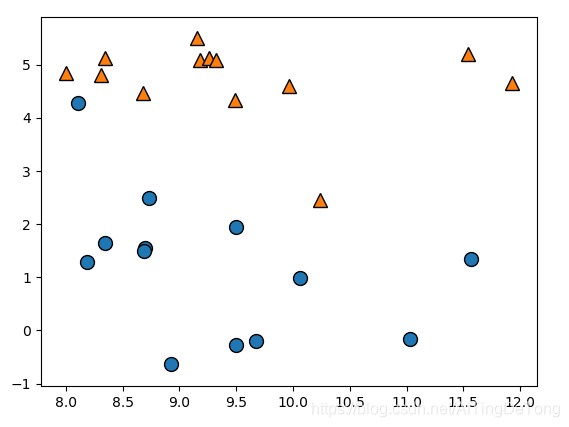
11

Python机器学习实践(三)监督学习篇3(朴素贝叶斯分类器)
source link: https://blog.csdn.net/AiTingDeTong/article/details/111405948
Go to the source link to view the article. You can view the picture content, updated content and better typesetting reading experience. If the link is broken, please click the button below to view the snapshot at that time.

Python机器学习 学习笔记与实践
环境:win10 + Anaconda Python3.8
该篇总结各类监督学习算法的实践使用方法
朴素贝叶斯分类器
scikit-learn中实现了三种朴素贝叶斯分类器:
GaussianNB、BernoulliNB 和 MultinomialNB。
GaussianNB 可应用于任意连续数据;
BernoulliNB 假定输入数据为二分类数据;
MultinomialNB 假定输入数据为计数数据。
1、BernoulliNB的理解
BernoulliNB 分类器计算每个类别中每个特征不为 0 的元素个数。下面通过一个小例子理解:
import numpy as np
X=np.array([[0,1,0,1],[1,0,1,1],[0,0,0,1],[1,0,1,0]])
y=np.array([0,1,0,1])
# 对每个类别进行遍历
# 计算(求和)每个特征中1的个数
counts = {}
for label in np.unique(y):
counts[label] = X[y == label].sum(axis=0)
print("Feature counts:\n{}".format(counts))
运行结果:
也就是说,类别为0的元素中,第一个特征不为0的元素有0个,第二个特征不为0的元素有1个…以此类推。
2、练习使用GaussianNB分类器:
from sklearn.naive_bayes import GaussianNB
import mglearn
import numpy as np
import matplotlib.pyplot as plt
#观察数据
X, y = mglearn.datasets.make_forge()
print('The shape of X is : {}'.format(X.shape))
print('The shape of y is : {}'.format(y.shape))
mglearn.discrete_scatter(X[:, 0], X[:, 1], y)
plt.show()
#训练模型,并给出预测的分类
cli = GaussianNB()
cli.fit(X,y)
test=np.array([[[8,0],[8,6],[11,1],[11,5]]])
for sample in test:
print(cli.predict(sample))
本例使用的数据集如下所示,每个样本有两个特征,一个为横坐标,另一个为纵坐标:


可见,在代码中我们使用[8,0],[8,6],[11,1],[11,5]四条样本数据进行测试,在图中分别位于左下、左上、右下、右上,从预测结果看到,模型分类正确。
Recommend
About Joyk
Aggregate valuable and interesting links.
Joyk means Joy of geeK